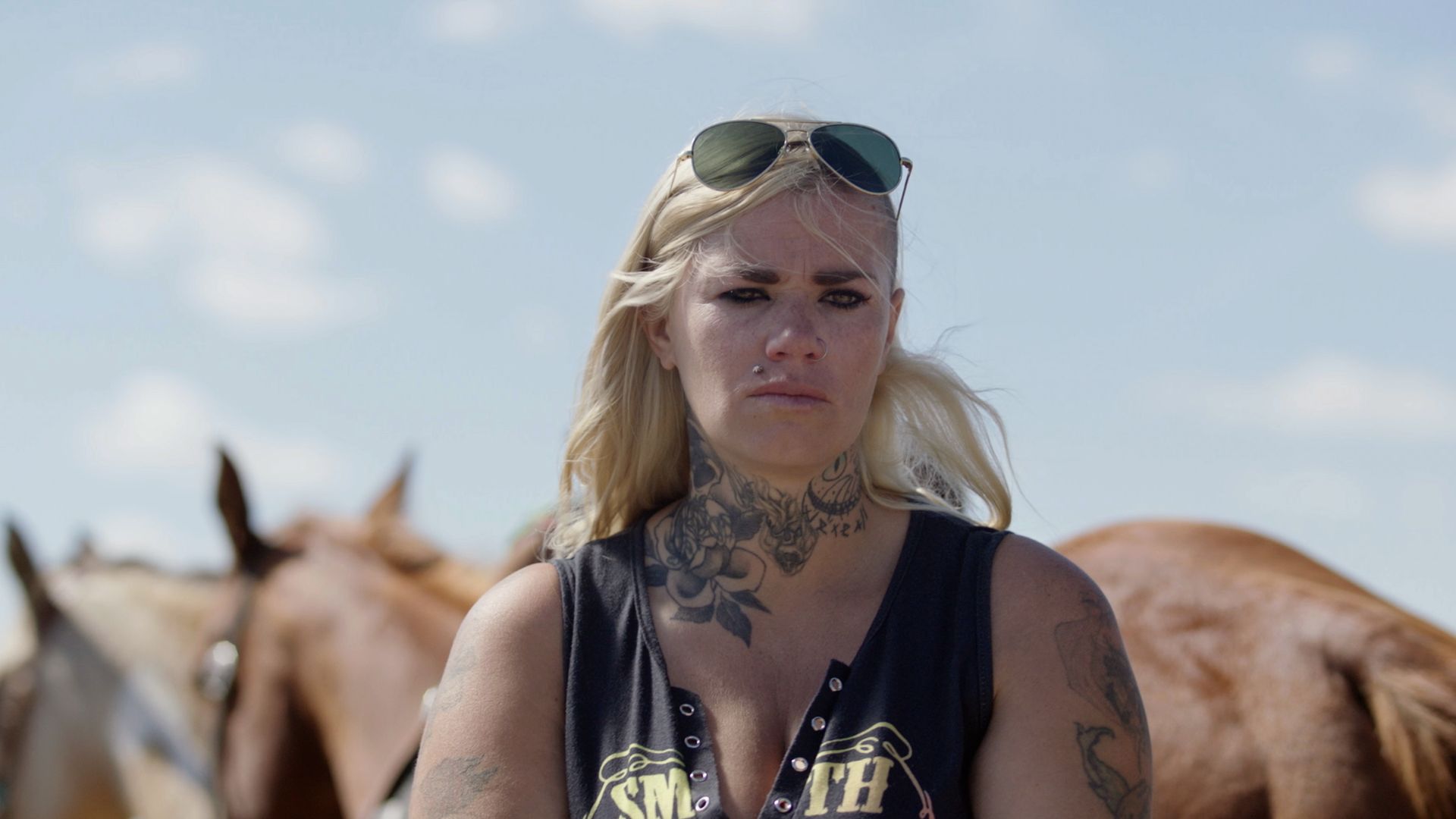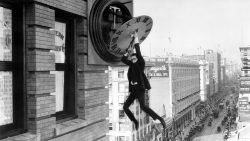Posted August 11, 2025
East of Wall: Preview Club Wrap-Up
As a part of the JBFC Preview Club, subscribers get an exclusive first look at the most interesting new indies and foreign films on our “New Releases” horizon. Every month, JBFC programmers Monica Castillo and Ian LoCascio present a special “secret” screening of an anticipated new film release before it is available to the public. After the screening, our programmers open the floor for a robust audience discussion and send Club members a wrap-up note with behind-the-scenes details and fun facts about the film they just watched.
As a special treat, we have decided to make these notes public. Beware, there may be spoilers!
Dear Preview Club Subscribers,
Thank you for another great evening of Preview Club!
As a reminder, this month’s film was East of Wall, which was written and directed by Kate Beecroft. East of Wall had its world premiere in the “NEXT” section of this year’s Sundance Film Festival, where it received the coveted audience award—and we’ll be opening the film at the JBFC on Aug. 15, courtesy of our friends at Sony Pictures Classics. East of Wall is a work of docufiction, blending fact with fiction and casting professional actors like Jennifer Ehle (who plays Tracey, Tabatha’s mother) and Scoot McNairy (who plays Roy, the man seeking to buy the ranch) alongside an ensemble of people, including Tabatha and her children, who are playing fictionalized versions of themselves.
Beecroft first met Tabatha rather serendipitously, when a cross-country road trip with the film’s cinematographer Austin Shelton led her to the badlands of South Dakota. The two were looking for inspiration for a film and, after befriending a local, they were told to go to a ranch just “east of the town of Wall,” where they would meet Tabatha, Portia, and their unconventional, very extended family. Beecroft was immediately struck by Tabatha and her family—and she wound up staying with them on and off for three years as she got to know them and began to devise what would become the screenplay for East of Wall.
While, outside of Jennifer Ehle and Scoot McNairy, East of Wall marks the acting debut for the bulk of its ensemble, Beecroft said that as she got to know Tabatha and Portia she quickly picked up the fact that each of them had an innate, yet also in its own right refined, set of performance skills. While neither had acted in a film before, there is a considerable element of performance to the horse sales like the ones you see in the film, which are the primary source of income for Tabatha and her family.
Still, it requires a different set of performance muscles to sell a horse compared to playing a character in a scripted film—even if, or, perhaps I should say especially if—the character you’re playing is a version of yourself. As I said on Tuesday, a personal pet peeve of mine is when someone complains that an actor is “just playing themself” onscreen or onstage. I feel like such a critique ignores the small nuances that make a performance truly great, and unless you know an actor personally, I also don’t see how you can even know what “playing themself” really means. Above all though, I dislike that critique because I think there are very few things more challenging for an actor to do than truly and truthfully play a version of themself; and with that said, I think it’s pretty remarkable how grounded and vulnerable the performances in East of Wall are.
Over the course of her time living at Tabatha’s ranch, Kate Beecroft wrote the film’s screenplay—which is based on the events of its characters’ lives but contains fictionalized
elements as well. Tabatha has spoken about the challenges of shooting the firepit scene, where she reveals the tragic (and true) details of her late partner’s passing, and, in doing so, confronts some very real trauma. Yet Tabatha and Portia have also spoken about the challenges presented by the fictionalized components of the film—as they are, then, required to try and act as themselves in imaginary circumstances.
Tabatha has described her scenes with Scoot McNairy’s character, Roy, the entirely fictionalized man looking to buy the ranch, as being challenging because that storyline wasn’t, like the bulk of the film, rooted in “a memory.” She has also described Portia’s character in the film as being much “moodier” than she is in real life, and said that the more intense scenes could be difficult because, even though they were both acting, Tabatha said she “didn’t want to hurt my babygirl.” And then on the other hand you have Jennifer Ehle, who played Tabatha’s mother Tracey with such accuracy that Tabatha’s young son Stetson frequently mistook her for his actual grandmother on set, and he eventually took to calling her “Fake Grandma.” Filmmaker Kate Beecroft credits producer Lila Yacoub (who produced such films as Lady Bird, Eighth Grade, and Frances Ha) for bringing Ehle and McNairy on board.
East of Wall exists in the realm of docufiction alongside such classics of the genre as Orson Welles’ F for Fake and Abbas Kiarostami’s Close-Up, but I think the film’s most clear point of reference is the work of Chloé Zhao—who is best known for her excellent docufictional Best Picture winner Nomadland, which featured Frances McDormand immersed in and acting alongside a non professional ensemble of nomads. Moreso than Nomadland, however, it is Zhao’s tremendous second feature The Rider which I think shares the most DNA with East of Wall. Both are set in South Dakota and center on real-life rodeo riders who are playing fictionalized versions of themselves; and, among other points of similarity, both are gorgeously shot in such a way that the South Dakota landscape feels like a character unto itself. East of Wall was shot digitally using two Alexa Mini LFs, and I think it’s one of the best looking movies I’ve seen all year.
As I said on Tuesday, I think that “East of Wall,” the set of directions through which filmmaker Kate Beecroft first found Tabatha, is the perfect title for this film. Tabatha and her family are the beating heart of East of Wall, but I think that this film also succeeds in capturing a slice of life in the untamable landscape they call home. From the canyons and crevices of the badlands, to the sky and the many creatures beneath it, and the horses and the people who ride them—East of Wall is a film with such a rich, textured sense of place.
I hope you enjoyed East of Wall, and I’ll see you next time!!
Best,
Ian



